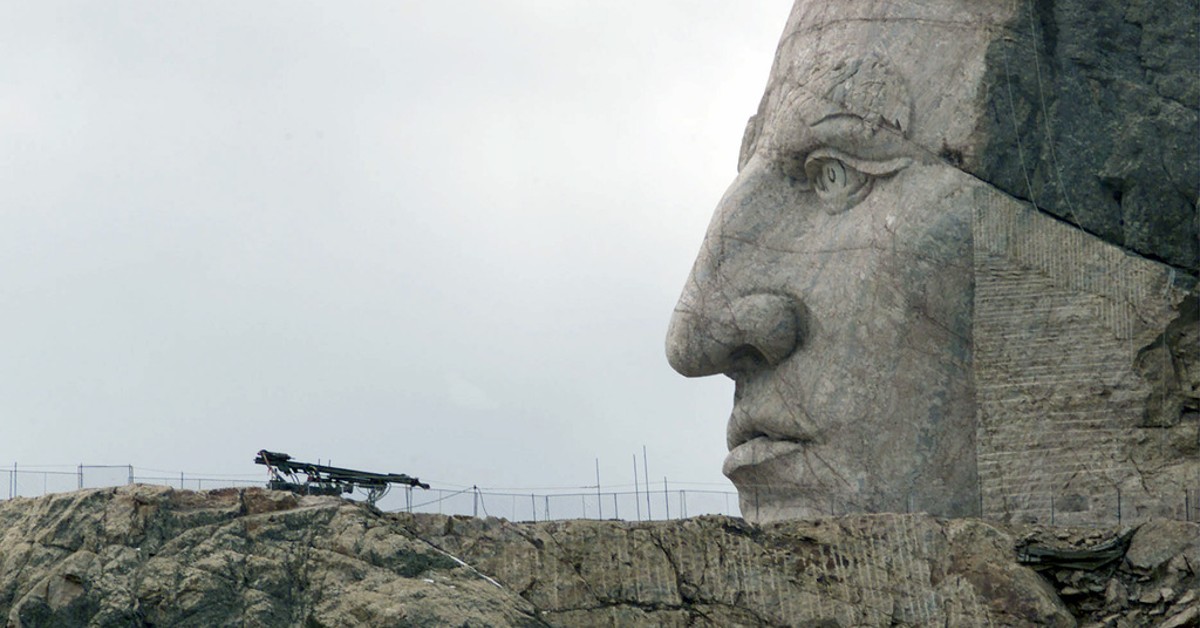This Day In History: Construction Begins On The Crazy Horse Memorial

On June 3, 1947, construction began on the Crazy Horse Memorial in South Dakota, which will be the second-largest statue in the world when it's finished. Yeah, even after 75 years, it has a long way to go, though it's a blink of an eye in terms of how long the Native American people have been waiting for proper recognition. It took the unlikely friendship between an Oglala Lakota chief and a Polish-American artist to start making the Crazy Horse Memorial a reality.
The Mount Rushmore Controversy
Mount Rushmore was intended to be a "shrine to democracy," but to the Native American people who made the Black Hills their home for generations, the giant carving of four U.S. presidents into the granite mountainside was a bit less impressive. After several protests failed to stop the construction, Oglala Lakota Chief Henry Standing Bear declared, "My fellow chiefs and I would like the white man to know the red man has great heroes also." He was thinking specifically of Crazy Horse, an Oglala Lakota war leader who fought back against the U.S. government after it broke its promises to the Native Americans, surrendering and dying at Camp Robinson in 1877.

The Crazy Horse Monument
Chief Standing Bear's brother wrote to Gutzon Borglum, head of the Mount Rushmore project, in 1931 to suggest adding Crazy Horse's face, but after Borglum failed to respond, Chief Standing Bear started a campaign to create a standalone monument. He scouted around the Black Hills and found an ideal location, but ironically, the mountain sat on land controlled by the U.S. government. He wrote to the Department of the Interior, offering 900 acres of his own fertile land in exchange for the barren mountain, and the department happily agreed. With a location secured, he recruited Korczak Ziolkowski, a Polish-American sculptor from Boston who worked on Mount Rushmore. At Chief Standing Bear's invitation, Zoilkowski traveled to Pine Ridge, South Dakota to meet with him in person and learn about Crazy Horse and the Lakota people.

The Status Of The Crazy Horse Monument
With all those pieces in place, construction could begin on the Crazy Horse Monument, but there was still one problem: funding. The U.S. government actually offered to fund the job, but Chief Standing Bear declined, preferring to finance the project through private donations. Those donations have been slow to roll in, meaning progress on the monument has been equally slow in the intervening 75 years. Zoilkowski and Chief Standing Bear have long since passed away, but others have carried on their legacy, finishing the head and face of Crazy Horse and beginning work on the addition of an outstretched arm and horse. Even while it sits incomplete, the monument attracts thousands of visitors each year.
No comments: